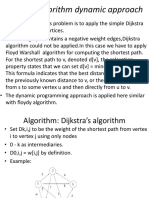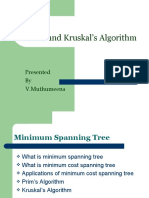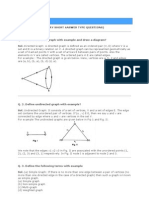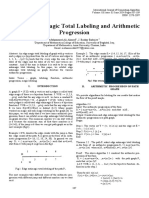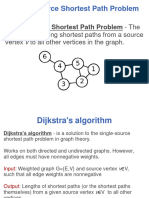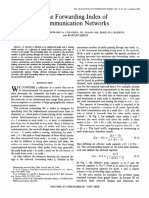0% found this document useful (0 votes)
88 views30 pagesAlgo Shortest Path2
The document discusses algorithms for bipartite matching and shortest paths in graphs, specifically focusing on Kuhn's and Hopcroft-Karp algorithms for matching, and Dijkstra's and Floyd-Warshall algorithms for shortest paths. It covers the definitions of matchings, augmenting paths, and the complexities of various algorithms. Additionally, it highlights the importance of handling edge weights and the implications of negative cycles in graph theory.
Uploaded by
qw2440Copyright
© © All Rights Reserved
We take content rights seriously. If you suspect this is your content, claim it here.
Available Formats
Download as PDF, TXT or read online on Scribd
0% found this document useful (0 votes)
88 views30 pagesAlgo Shortest Path2
The document discusses algorithms for bipartite matching and shortest paths in graphs, specifically focusing on Kuhn's and Hopcroft-Karp algorithms for matching, and Dijkstra's and Floyd-Warshall algorithms for shortest paths. It covers the definitions of matchings, augmenting paths, and the complexities of various algorithms. Additionally, it highlights the importance of handling edge weights and the implications of negative cycles in graph theory.
Uploaded by
qw2440Copyright
© © All Rights Reserved
We take content rights seriously. If you suspect this is your content, claim it here.
Available Formats
Download as PDF, TXT or read online on Scribd
/ 30




